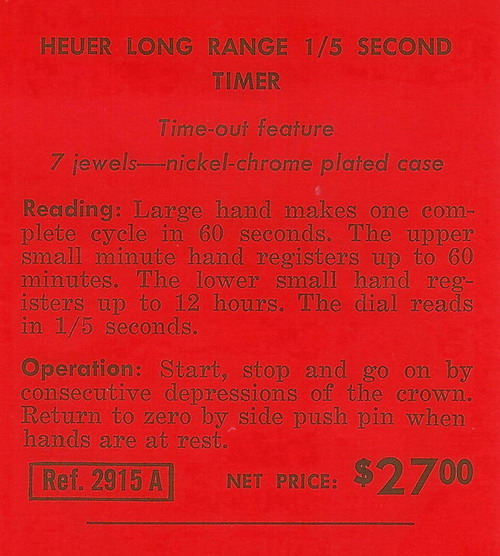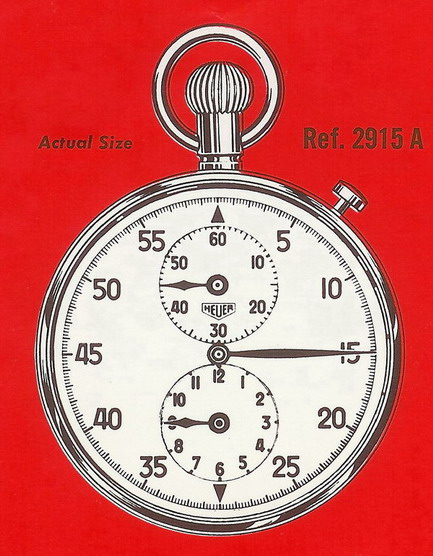|
Measuring
time has been a critical factor in men's journeys
into space, as it was also critical in man's early
journeys across the oceans or the continents by
railroad. Whether executing precise maneuvers or
navigating the journey, it has been critical for
space travellers to be able to time events and to
know the time of day (in a realm in which there are
no days). Conditions demand timepieces that will be
rugged, reliable and precise, and easy to read and
operate.
Those
who are interested in the history of space travel,
and those who are interested in watches, have
collaborated to identify the timepieces that were
used on the space missions -- from the earliest
Soyuz and Mercury missions to the current Space
Shuttle and International Space Station. According
to the conventional wisdom, (a) Yuri Gagarin, the
first human to orbit the earth, wore a Russian-made
chronograph (Sturmanskije), which became the first
watch worn in space, and (b) Scott Carpenter,
America's fourth astronaut, was the first to wear a
Swiss (or non-Russian) watch in space. My research
suggests that this conventional wisdom is
incorrect, and in fact, John Glenn wore a Heuer
stopwatch, strapped to his wrist, when he orbited
the earth. Accordingly, the correct sequence of
Astronauts, Spacecraft, Missions and Watches first
worn in space is as follows:
|
Spacecraft
/ Astronaut / Date
|
Accomplishment
/ Duration (HH:MM:SS)
|
Watch
|
|
Yuri
Gagarin (USSR) / Vostok 1 / April 12,
1961
|
first
man in space; completed one orbit of the
earth
|
Sturmanskije
chronograph
|
|
Alan
Shepard (US) / Freedom 7 / May 5,
1961
|
first
American in space; reached space, but did
not orbit (00:15:22)
|
unknown
|
|
Gus
Grissom (US) / Liberty Bell 7 / July 21,
1961
|
reached
space, but did not orbit
(00:15:37)
|
unknown
|
|
John
Glenn (US) / Friendship 7 / February 20,
1962
|
first
American to orbit the earth; three orbits
(04:25:33)
|
Heuer
Stopwatch, Reference
2915A
|
|
Scott
Carpenter (US) / Aurora 7 / May 24,
1962
|
three
orbits of the earth
(04:56:05)
|
Breitling
Navitimer Cosmonaut
|
|
Wally
Schirra (US) / Sigma 7 / May 24,
1962
|
six
orbits of the earth
(09:13:11)
|
Omega
Speedmaster
|
This
webpage presents conclusive evidence -- based on
photographs in the NASA archives, records of the
flight, and current and previous exhibits that show
John Glenn's watch -- that John Glenn wore a Heuer
stopwatch on his journey into space.
It
is likely that collectors and enthusiasts will
debate various aspects of this statement, including
such matters as (a) whether a stopwatch is, in
fact, a "watch"; (b) how and why this watch
was selected for the mission; and (c) what were the
"backup clocks" used on earlier and later missions.
Others may question the importance of this
stopwatch going into space, as compared with the
Breitling and Omega chronographs used in the next
missions. These are interesting matters for
discussion -- at least among the small community
that cares about the history of watches and
chronographs, and particularly those worn in space.
I am
happy to introduce the "Heuer" name -- with its
rich history and reputation in sports and
scientific timing -- into this discussion (or
perhaps we should call it the "space race"), and to
present the information and images that I have
gathered. I will leave it for our readers to
discuss this information and to place it into its
proper historical perspective.
Jeff
Stein, July 31, 2006.
|
Special
Thanks to the people who contributed to
this article. First, to Sheldon Smith. He
visited the San Diego Air and Space
Museum, armed with a camera in his Treo
phone, and brought John Glenn's stopwatch
onto the Internet, through posting a
message
and some
photos
on TimeZone's TAG-Heuer discussion forum.
Thanks to Hans Schrag, who remembered
seeing this watch on display in late
1960's and provided information about this
and other watches that may have been used
on the early Mercury flights. Thanks to
Chuck Maddox for providing information
about the history of the Mercury and
Apollo space programs (and the watches
that were onboard), and for helping to
unravel the mystery of John Glenn's Heuer.
Thanks to Steve Smith, a UK Heuer
collector, for providing photos of
his Heuer
Stopwatch,
Reference 2915-A).
|
|
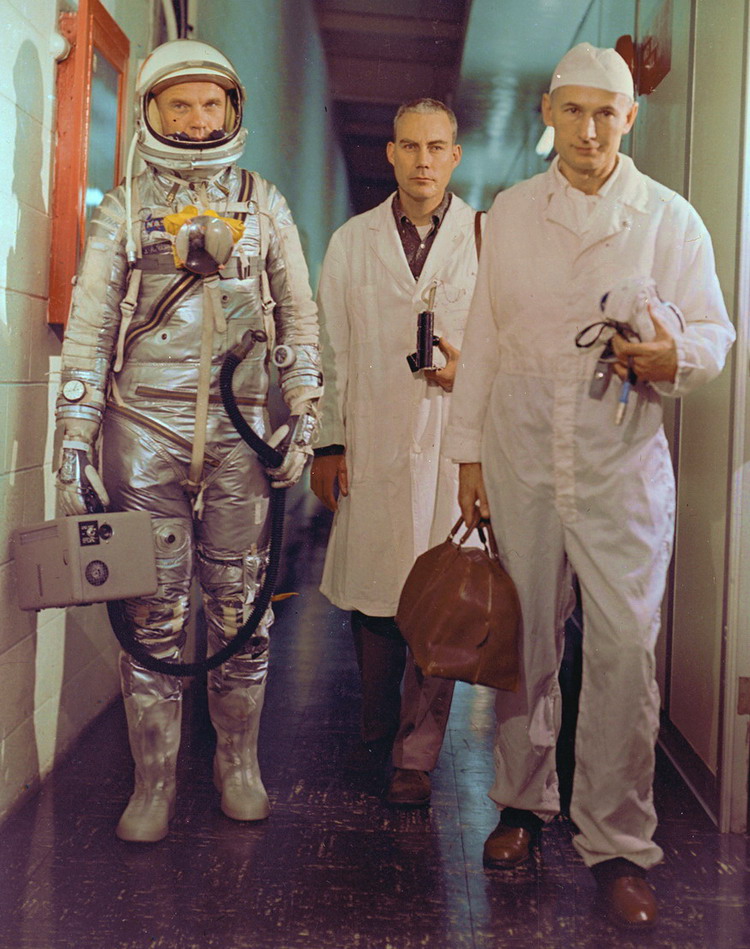
|
John
Glenn, shortly before the launch of MA-6, walking
from crew quarters to the vehicle that will
transport him to the launch-pad. Note the Heuer
stopwatch, on Glenn's right wrist /
forearm.
NASA
caption: "View of Astronaut John H. Glenn Jr., Dr.
William Douglas, Astronauts Flight Surgeon, and
equipment specialist Joe Schmitt leaving crew
quarters prior to Mercury-Atlas 6 (MA-6) mission.
Glenn is in his pressure suit and is carrying the
portable ventilation unit." Date photograph taken
-- 1962 February 20.
Click
to see the NASA
caption and database information for this
photo
or to see a close-up
view John Glenn's
stopwatch.
|
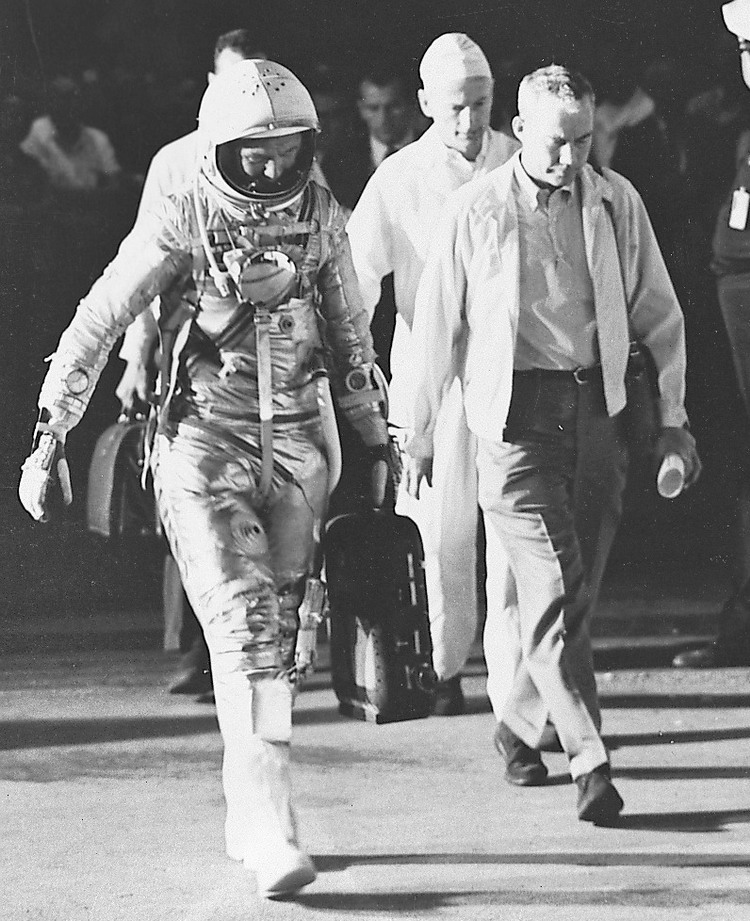
|
NASA
caption: "View of Astronaut John H. Glenn Jr., Dr.
William Douglas, Astronauts Flight Surgeon, and
equipment specialist Joe Schmitt leaving Operations
and Checkout Building prior to Mercury-Atlas 6
(MA-6) mission." Date photograph taken -- 1962
February 20.
Click
to see the NASA
caption and database information for this
photo.
|
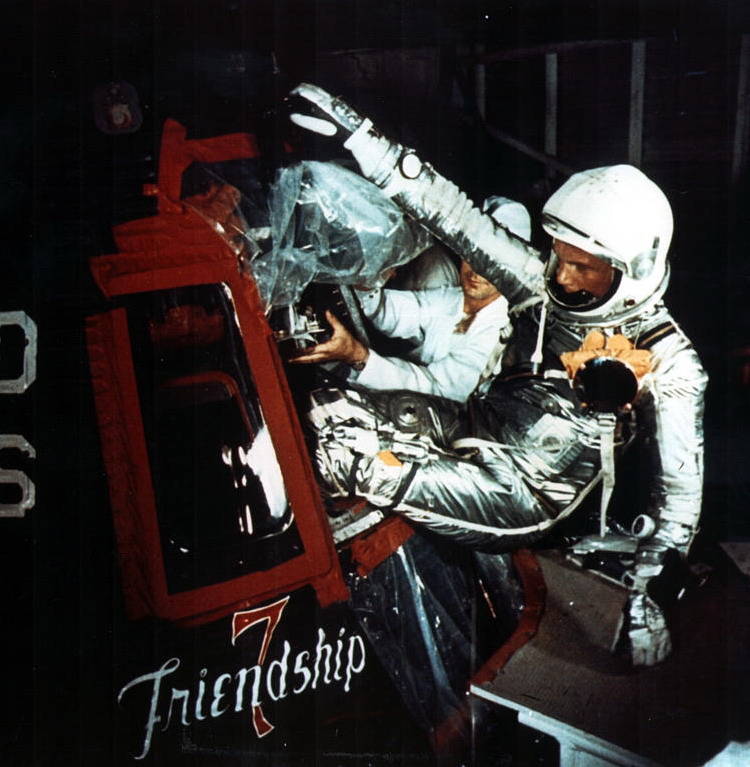
|
NASA
caption: "Overall view of astronaut John Glenn,
Jr., as he enters into the spacecraft Friendship 7
prior to MA-6 launch operations at Launch Complex
14. Astronaut Glenn is entering his spacecraft to
begin the first American manned Earth orbital
mission."
Click
to see the NASA
caption and database information for this
photo.
|
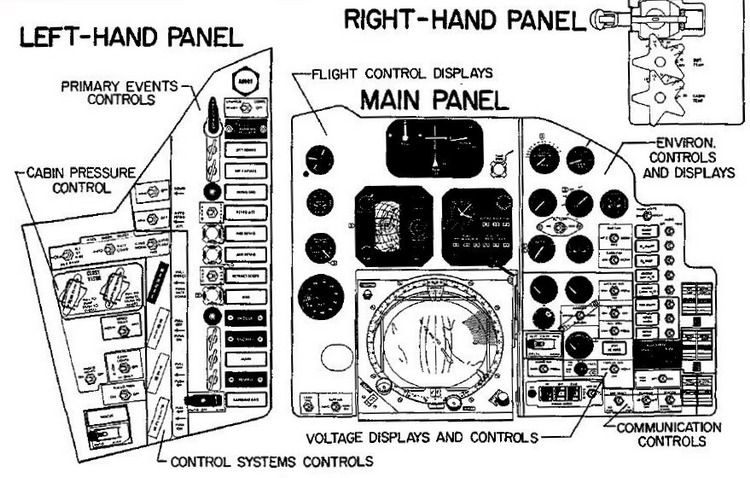
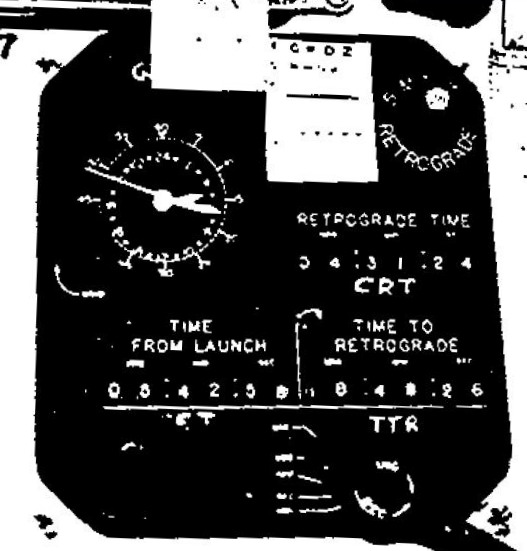
|
Having now
determined that John Glenn was wearing a Heuer
stopwatch on his wrist during his flight, we should
now address the more difficult questions: Why was
he wearing this stopwatch? What purposes did it
serve? In a capsule with sophisticated instruments,
why was it necessary for John Glenn to strap a
stopwatch to his wrist? In short, just what was he
timing with this stopwatch?
Perhaps we can
begin to answer these questions by examining the
instrument panel, to see what instruments were
included in the Friendship 7 capsule (and what
might have been missing). Above are diagrams of the
Friendship 7 instrument panel, the top photo
showing the entire instrument panel and the bottom
photo showing the detail of the timing instruments.
There are four timing instruments on the instrument
panel of Freindship 7, as follows:
- Time of
Day Clock (analog display; continuous clock,
with no time in / time out capability);
- Time From
Launch timer (digital display);
- timer
showing Retrograde Time (digital display); and
- Time to
Retrograde timer (digital display).
Turning to the
official transcript of pilot communications from
the flight (shown below), we find some interesting
evidence regarding the timing instruments aboard
Friendship 7. The first communication from John
Glenn following the launch, three seconds into the
flight, confirmed that
"The
clock is operating".
This is the familiar first communication after
liftoff, and we see similar communications from
astronauts on other flights (for example, on MA-8,
Wally Schirra's first communication is "I have
the liftoff. Clock has started").
Continuing
with the transcript from MA-6, the next series of
communications regarding timing / clocks comes 17
seconds after launch. The Capsule Communicator
tells Glenn to standby for the 20 second mark, he
then says "2 . . . 1, mark", in order to tell Glenn
exactly when the 20 second mark is occuring. Glann
uses this 20 second mark as the signal to start his
backup clock, and he then confirms
"Backup
clock has started."
(This is similar to communications with Schirra, on
MA-7, when the Capsule Communicator instructs Wally
Schirra to "standby for 20 seconds"; at the 20
second mark, Schirra confirms that "Backup started
and runing good"; and Schirra then confirms back
with a "hack" at the 30 second
mark).
|
|
Time
of Communication
|
Duration
of Communication (sec)
|
Communicator
|
Transcript
|
|
|
|
Capsule Communicator
|
3 . . . 2 . . . 1 . . . 0
|
|
00 00 03
|
4.0
|
Glenn
|
Roger. The
clock is operating. We're
underway.
|
|
00 00 07
|
1.5
|
Capsule Communicator
|
Hear loud and clear.
|
|
00 00 08
|
2.0
|
Glenn
|
Roger. We're programing in roll
okay.
|
|
00 00 13
|
3.5
|
Glenn
|
Little bumpy along about here.
|
|
00 00 15
|
1.0
|
Capsule Communicator
|
Roger.
|
|
00 00 17
|
2.0
|
Capsule Communicator
|
Standby for 20 seconds.
|
|
00 00 19
|
0.5
|
Glenn
|
Roger.
|
|
00 00 20
|
2.0
|
Capsule Communicator
|
2 . . . 1, mark.
|
|
00 00 23
|
3.3
|
Glenn
|
Roger. Backup
clock is started.
|
|
00 00 32
|
5.0
|
Glenn
|
Fuel 102-101 [percent], oxygen
78-100 [percent], amps 27.
|
|
00 00 39
|
3.0
|
Capsule Communicator
|
Roger. Loud and clear. Flight path is
good, 69 [degrees].
|
|
00 00 43
|
4.0
|
Glenn
|
Roger. Checks okay. Mine was 70
[degrees] on your mark.
|
|
00 00 48
|
2.5
|
Glenn
|
Have some vibration area coming up here
now.
|
|
00 00 52
|
2.0
|
Capsule Communicator
|
Roger. Reading you loud and clear.
|
|
00 00 55
|
4.0
|
Glenn
|
Roger, Coming into high Q a little bit;
and a little contrail went by the window
or something there.
|
|
00 01 00
|
0.5
|
Capsule Communicator
|
Roger.
|
|
|
But what was
this "backup clock" that John Glenn started at the
20 second mark of his flight?
Close
inspection of the Heuer stopwatch that Glenn is
wearing before the flight confirms that this Heuer
stopwatch served as the "backup clock" for the
flight. Looking carefully at the stopwatch, in the
first two photos on this page, you will see that as
Glenn walked to the capsule, the stopwatch was not
set to zero, rather the second hand sits at the 20
second mark. (Details from these two photos are
shown below.)
So when Glenn
confirms, at the 20 second mark of the flight, that
he has started the backup clock, he is referring to
the Heuer stopwatch strapped to his right
wrist.
|
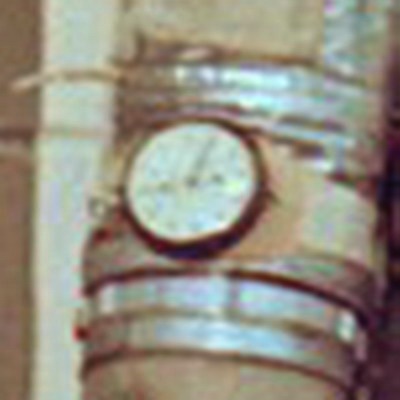
|
|
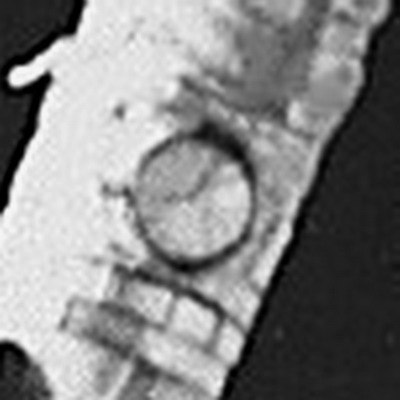
|
|
I have
concluded that the official transcript of voice
communications from the MA-6 mission, together with
the photographs of John Glenn wearing the Heuer
stopwatch as he approached and entered the capsule,
establish conclusively that John Glenn used this
Heuer stopwatch, Reference 2915-A, as the "backup
clock" on the United States' first human orbital
mission in space.
|
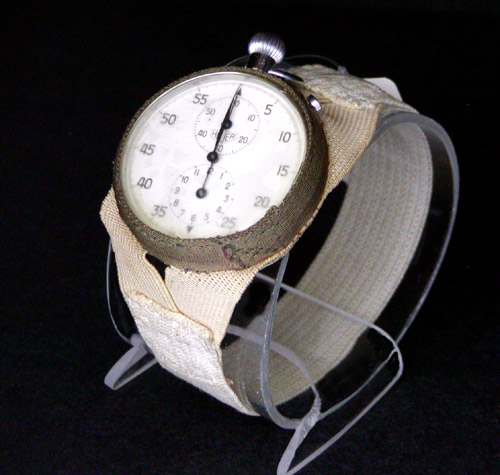
|
John
Glenn's Heuer stopwatch is currently owned by the
Smithsonian Institution National Air and Space
Museum, located in Washington, D. C. Since at least
September 2005, the stopwatch has been on display
at the San Diego Air and Space Museum. The
photograph above shows the stopwatch, as it is
currently being displayed in San Diego. The
description that accompanies the display is shown
below.
Questions
have arisen as to how this stopwatch has recently
appeared on display at the San Diego Air and Space
Museum, but has not been displayed at the
Smithsonian Air and Space Museum. in Washington,
D.C. According to Hans Schrag, who worked for Heuer
during the 1960's, this stopwatch was, in fact, on
display in Washington, D.C. in the late 1960's.
Before the Smithsonian Air and Space Museum had a
permanent home (on the Mall in Washington), Hans
visited a temporary display and was excited to see
a display that included John Glenn's spacesuit and
his Heuer stopwatch.
|
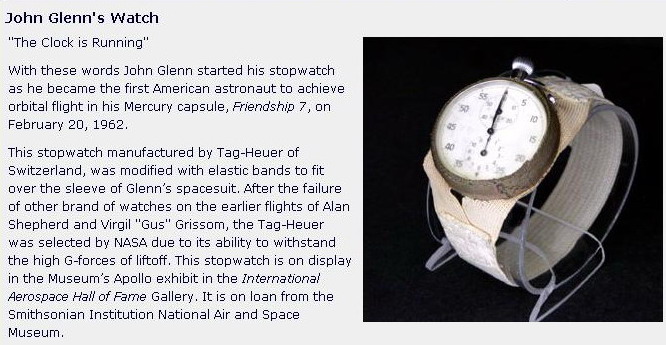
|
John
Glenn's stopwatch appears to be a standard Heuer
stopwatch, Reference 2915-A. The stopwatch is
attached to the wriststrap by a cloth bezel (and
perhaps some adhesive at the back); the wriststrap
appears to be elastic.
|
|
Above
is the description of this stopwatch, from
Heuer's
1961-62
catalog,
along with an illustration of the watch. How
fitting that Heuer referred to this one as a "Long
Range Timer".
Shown
below are photographs of two samples of this
stopwatch. For additional photos of these
stopwatches, including detailed photos of the case
and movement, go to the
Stopwatch Section of
OnTheDash.com.
|
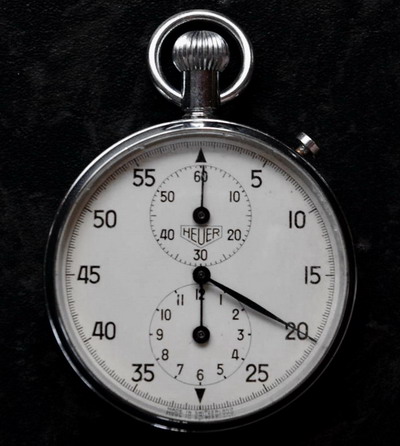
|
|
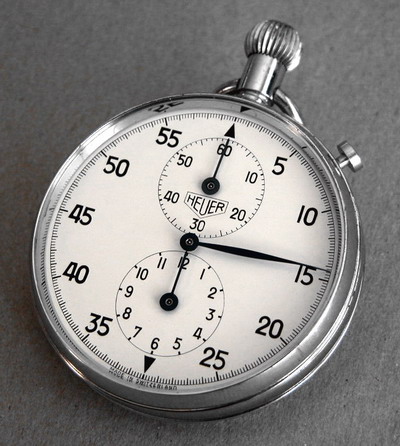
|
|
Resources
|
|
The
Mercury Program
|
|
NASA
website for the Mercury Program
|
a
history of the Mercury Program, including photo
Galleries.
|
|
This
New Ocean: A History of Project
Mercury
|
excellent
history of the Mercury Program; written in 1966,
and now available online
|
|
MA-6
-- The United States' First Manned Orbital
Mission
|
|
NASA's
website for MA-6
|
the
oficial NASA website for the
mission
|
|
NASA's
Report on MA-6
|
comprehensive
report (PDF) covering the preparation for, and
results of, the Mission; includes diagrams and
descriptions of the capsule, and a complete
transcript of air-ground communications during the
flight
|
|
Collections
of Photographs
|
|
GRIN
(Great Images In NASA)
|
NASA's
comprehensive library of images
|
|
JSC
Digital Image Collection
|
A
searchable collection of images, from NASA's
Johnson Space Center.
|
|
Photos
relating to MA-6
|
A
collection of NASA's photos and captions relating
to MA-6.
|
|
Watches
in Space
|
|
Wristwatches
in Space
|
Chuck
Maddox' timeline detailing the watches that were
used in the space missions.
|
|
Time
in Space
|
An
article by Steven J. Lundin, which appeared in
International Wristwatch, Number 40 (1999).
|
|
Additional
Information
|
|
Request
for Information
|
If
you can provide additional information regarding
John Glenn and his Heuer, or other watches used on
the early space msssions, please send an e-mail
message to onthedash@bellsouth.net
.
|
|









